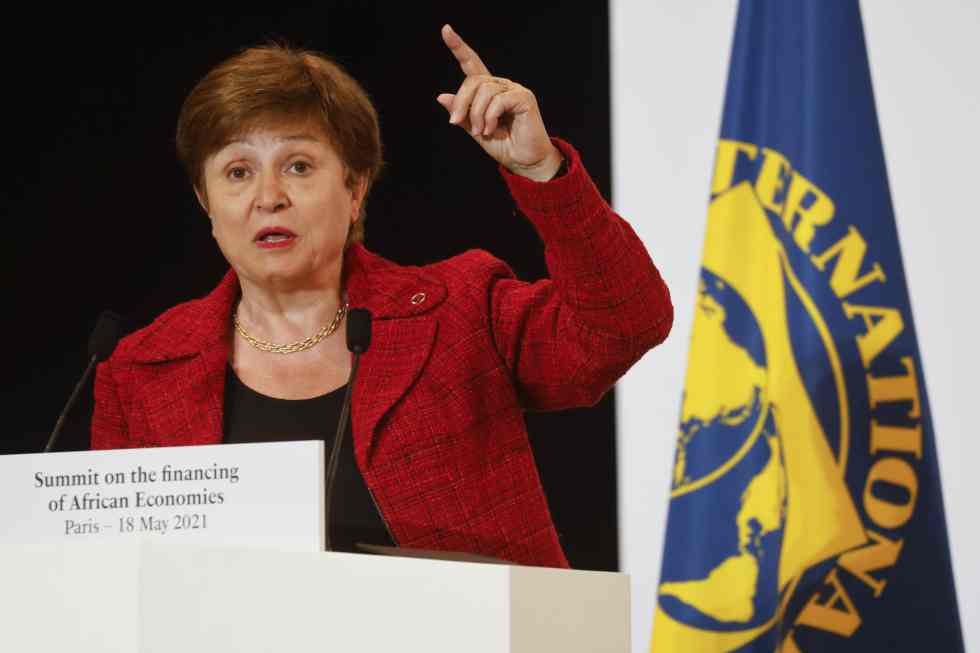Economists are predicting fast progress within the U.S financial system as individuals resume their pre-pandemic spending habits.
The nation’s financial system grew at a 6.4 % annual fee final quarter, prompted by authorities help, widespread vaccinations, wholesome job beneficial properties and the reopening of companies.
For 2021 as an entire, economists count on the financial system to broaden near 7 %, which might be the quickest calendar-year progress since 1984.
“The financial system is on hearth,” Sung Received Sohn, a finance and economics professor at Loyola Marymount College, informed the Related Press earlier than Thursday’s gross home product (GDP) report was launched. “It’s being fueled by the vaccine, which is the perfect financial stimulus we’ve got, plus huge authorities spending.”
This rebound from the pandemic recession is spurred by the $1,400 stimulus funds and different rescue help from President Joe Biden’s $1.9 trillion reduction package deal, which was handed by Congress in March.
Moreover, Biden is proposing two extra spending packages. Throughout his handle to Congress Wednesday night time, he promoted his $2.3 trillion infrastructure plan and a $1.8 trillion funding in kids, households and schooling.
For extra reporting from the Related Press, see under:
The nation’s GDP—its complete output of products and providers—accelerated within the January-March quarter from a 4.3 % annual acquire within the final quarter of 2020, the federal government stated Thursday. Development within the present April-June interval is anticipated to be sooner nonetheless: Some economists say it may attain a ten % annual fee or extra, pushed by a surge in individuals touring, purchasing, eating out and in any other case resuming their spending habits.
The federal government additionally stated Thursday that the variety of Individuals searching for unemployment help reached a brand new pandemic low final week. Although layoffs stay elevated, they’re steadily easing because the financial system extra totally reopens.
The Federal Reserve’s ultra-low rate of interest coverage, which is meant to encourage borrowing and spending, has supplied vital help too. Actually, the financial system is anticipated to broaden so quick that some economists have raised issues that it may ignite inflation.
Partially, it’s because stronger demand has triggered provide bottlenecks and shortages of some items and elements, notably semiconductors, that are essential to the auto, know-how and medical gadget industries, amongst others.
At a information convention Wednesday after the Fed’s newest coverage assembly, although, Chair Jerome Powell reiterated his confidence that any surge in inflation would show non permanent. And he stated the Fed desires to see a considerable and sustained restoration earlier than it will take into account withdrawing its financial help. Within the meantime, Powell made clear, the central financial institution is not even near starting a pullback in its ultra-low fee insurance policies.
The power of the rebounding U.S. financial system has been significantly placing given the scope of injury the pandemic inflicted on it starting in March of final 12 months. With companies all however shut down, the financial system contracted at a document annual tempo of 31% within the April-June quarter of final 12 months earlier than rebounding sharply within the subsequent months.
In current weeks, the financial beneficial properties have grow to be more and more evident. In March, U.S. employers added 916,000 jobs—the largest burst of hiring since August. On the identical time, the tempo of layoffs has dwindled, retail spending has surged, manufacturing output is up and client confidence has reached its highest level because the pandemic started.
Thursday’s GDP report confirmed that client spending, which accounts for greater than two-thirds of the financial system, surged at a ten.7 % annual fee within the January-March quarter, a major acceleration after spending had slowed to a 2.3 % annual acquire within the closing three months of final 12 months.
Enterprise funding rose at a robust annual fee of practically 10 %, reflecting a burst of spending on tools. The residential sector, which has been a standout performer within the final 12 months due to ultra-low mortgage charges, grew at a roughly 11 % annual fee within the first quarter, nonetheless stable however down from the fourth quarter.
Final quarter, authorities spending grew at a 6.3 % annual fee after two straight declines that had mirrored weak point on the state and native stage because the pandemic recession shrank tax income.
Companies did sluggish their tempo of stock restocking within the January-March quarter, which shaved 2.6 share factors from the quarter’s progress. And a rising commerce deficit diminished progress by 0.8 share level.
Mark Zandi, chief economist at Moody’s Analytics, stated earlier than Thursday’s GDP report was launched that every one indicators level to an financial growth this 12 months, fueled by heavy authorities help and a flood of pent-up client demand because the financial system additional reopens.
“This must be a gangbuster 12 months,” Zandi stated. “I’ve been forecasting the financial system for nearly 30 years, and I am unable to bear in mind a time when I’ve been as assured as I’m immediately.”











Leave a Reply